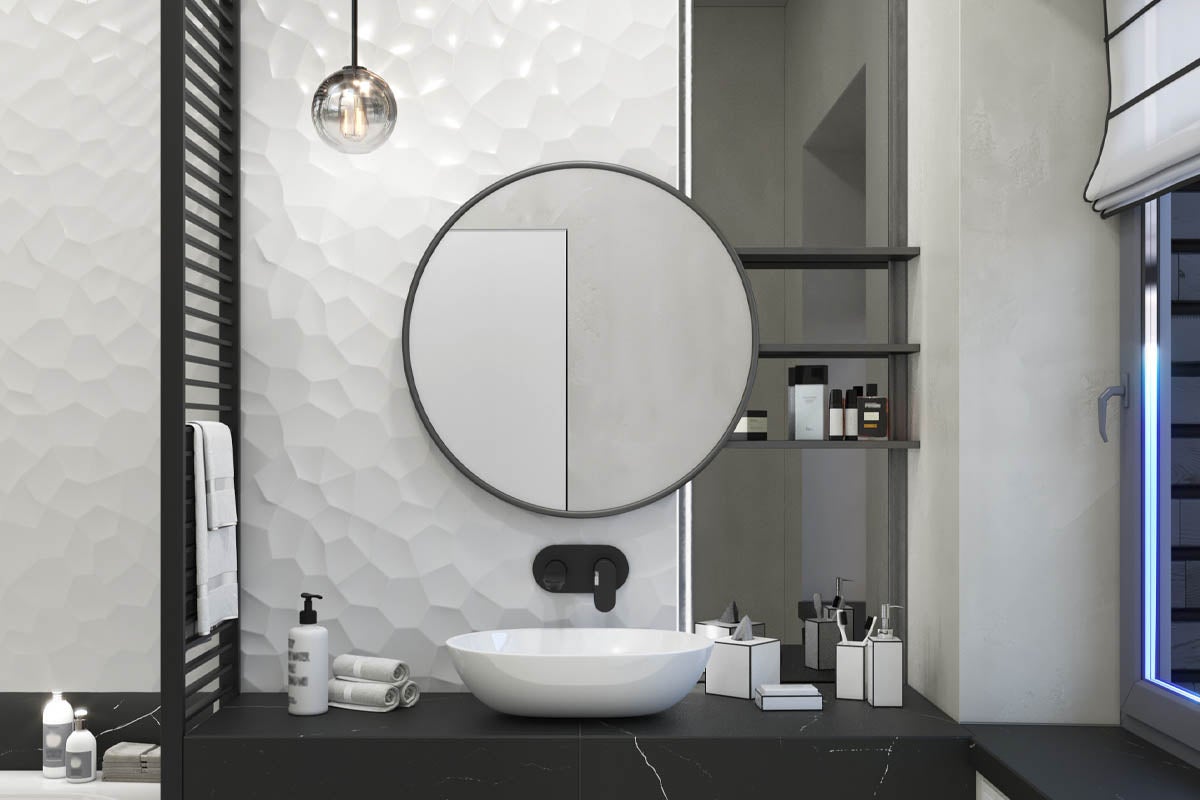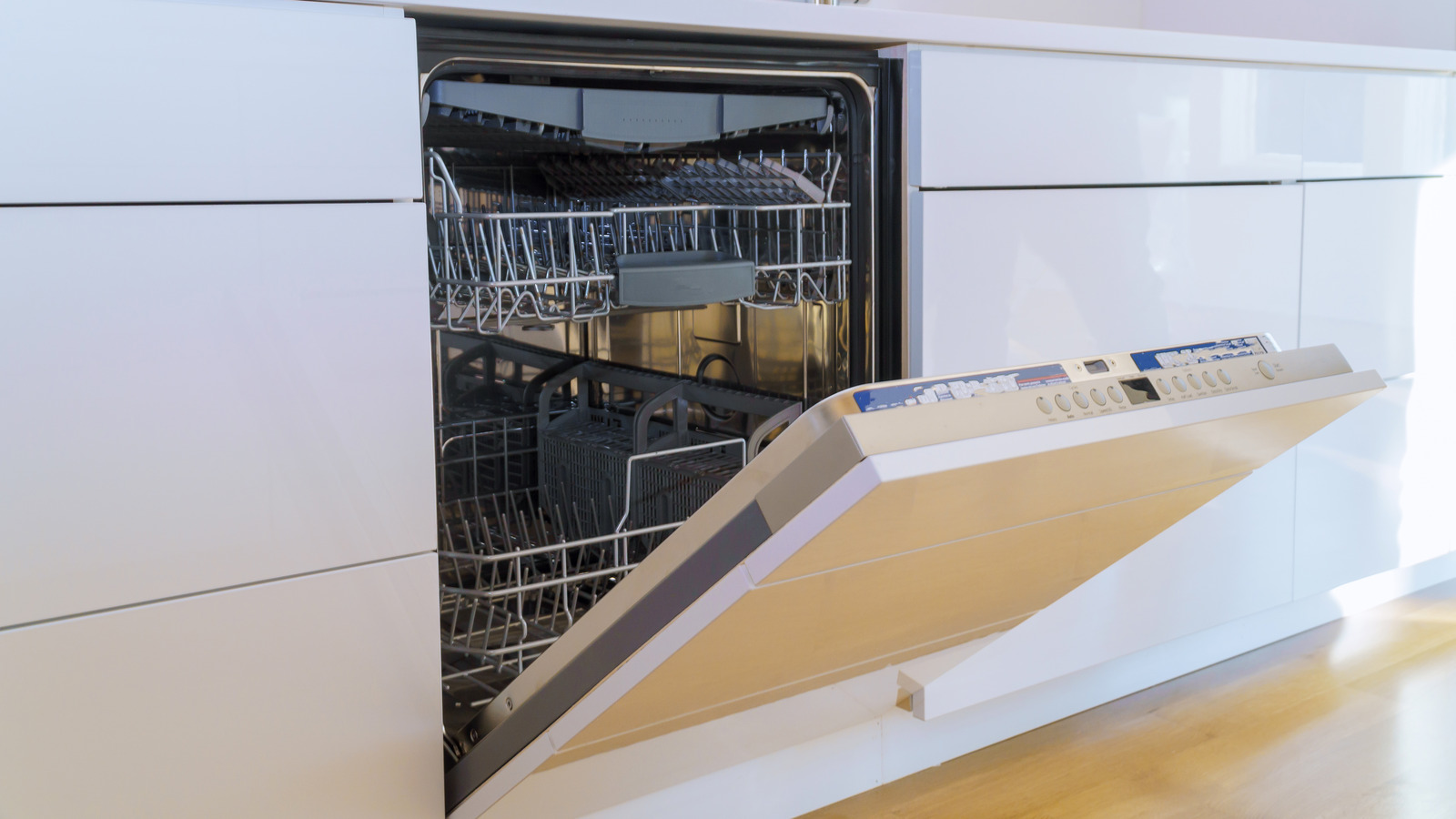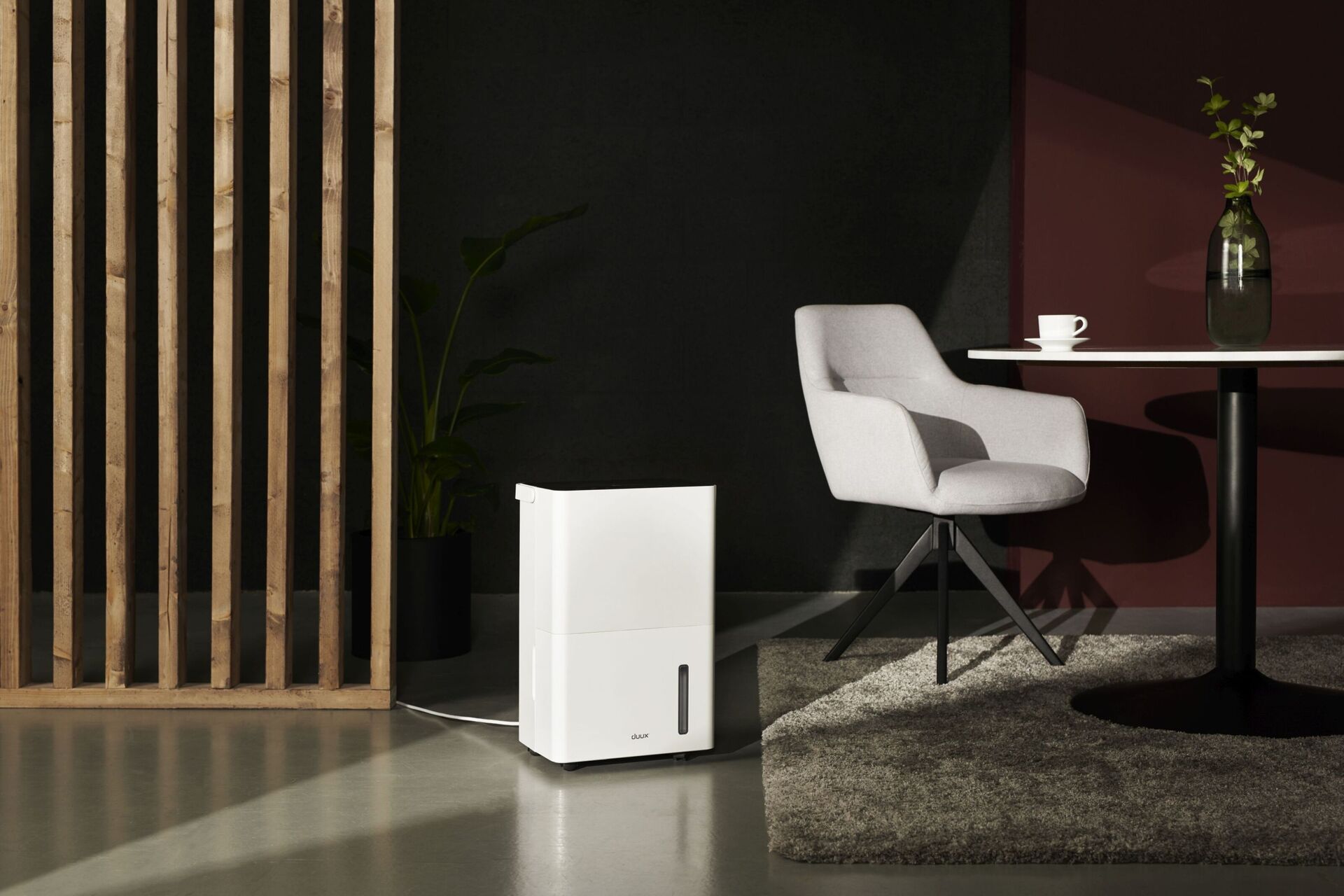

Articles
How Much Does An Electrical Box Cost
Modified: August 27, 2024
Find out the average cost of an electrical box in this informative article. Discover tips and insights on buying and installing electrical boxes.
(Many of the links in this article redirect to a specific reviewed product. Your purchase of these products through affiliate links helps to generate commission for Storables.com, at no extra cost. Learn more)
Introduction
When it comes to electrical installations, one key component that often goes unnoticed is the electrical box. Whether you’re building a new home, remodeling, or simply need to upgrade your electrical system, having a reliable electrical box is essential.
An electrical box, also known as a junction box, is a crucial safety feature in any electrical system. It serves as a protective enclosure for electrical connections and wiring, preventing electrical shocks and fires.
While the importance of an electrical box cannot be overstated, the cost of this component can vary depending on various factors. In this article, we will explore the factors that influence the cost of an electrical box, the different types available, the installation costs, and additional expenses to consider.
Whether you’re a homeowner or a contractor, understanding the costs associated with electrical boxes can help you make informed decisions and budget accordingly for your electrical projects.
Key Takeaways:
- Understanding the factors that influence the cost of electrical boxes, such as material, size, and type, can help homeowners and contractors make informed decisions and budget effectively for their electrical projects.
- While saving money on electrical box costs is important, prioritizing safety and quality is crucial. It’s essential to hire qualified professionals and consider cost-saving strategies without compromising on the integrity of the electrical system.
Read more: How Much Does Electric Fence Cost
Factors that Influence the Cost of an Electrical Box
Several factors influence the cost of an electrical box. It’s important to consider these factors when determining the budget for your electrical projects. Here are some key factors to keep in mind:
- Material: The material of the electrical box plays a significant role in its cost. Common materials used for electrical boxes include steel, plastic, and fiberglass. Steel boxes tend to be more expensive due to their durability and fire-resistant properties. Plastic boxes are more affordable but may not offer the same level of protection.
- Size: The size of the electrical box impacts its cost. Larger boxes are typically more expensive as they require more materials to manufacture. The size of the box should be determined based on the number and type of electrical connections needed.
- Type: There are different types of electrical boxes available to suit various applications. Standard electrical boxes, which are commonly used for residential and commercial installations, are typically more affordable compared to specialty boxes designed for specific purposes, such as outdoor or waterproof installations.
- Features: Certain features can increase the cost of an electrical box. For example, boxes with built-in knockouts, cable clamps, or mounting brackets may be more expensive than basic boxes. Additionally, specialty boxes with added functionalities, such as dimmer switches or USB outlets, may come at a higher price.
- Brands: The brand of the electrical box can also affect its cost. Well-known brands that have a reputation for quality and reliability may be priced higher than generic or lesser-known brands. It’s essential to strike a balance between cost and quality when selecting a brand.
By considering these factors, you can get a better understanding of why the cost of electrical boxes may vary. It’s important to assess your specific needs and requirements to determine the appropriate type and size of electrical box for your project.
Standard Electrical Boxes
Standard electrical boxes are the most common type of electrical boxes used in residential and commercial installations. They are designed to accommodate standard-sized electrical wiring and connections. Standard electrical boxes are typically made of durable materials like steel or plastic and come in various shapes and sizes.
These boxes are available in different configurations to meet different needs, including single-gang, double-gang, and multi-gang boxes. Single-gang boxes are the most basic and suitable for most electrical installations. Double-gang and multi-gang boxes allow for multiple switches or outlets to be installed in a single enclosure.
The cost of standard electrical boxes primarily depends on factors such as material, size, and features. Plastic boxes tend to be more affordable compared to steel boxes. The size of the box will influence its cost, with larger boxes generally being more expensive. Boxes with added features like knockouts, cable clamps, or mounting brackets may also come at a higher price.
It’s important to choose a standard electrical box that is compatible with the wiring and devices you plan to install. It should provide adequate space for all the necessary connections and meet the electrical code requirements of your area. Consulting with a qualified electrician can help ensure you choose the right type and size of standard electrical box for your project.
When purchasing standard electrical boxes, it’s a good idea to compare prices from different suppliers and brands. This can help you find the best combination of quality and affordability. It’s worth noting that while opting for cheaper options may save you money upfront, it’s important to prioritize safety and quality to avoid potential issues in the future.
Overall, standard electrical boxes are a cost-effective choice for most electrical installations. They provide a reliable and safe enclosure for electrical connections while being readily available and easily accessible. By selecting the appropriate standard electrical box for your project, you can ensure a smooth and efficient installation process while adhering to electrical safety standards.
Specialty Electrical Boxes
In addition to standard electrical boxes, there are also specialty electrical boxes that are designed for specific applications and installations. These specialty boxes offer unique features and properties to meet particular needs and requirements. While they may come at a higher cost compared to standard boxes, they provide added functionality and protection.
Here are some examples of specialty electrical boxes:
- Outdoor Boxes: Outdoor electrical boxes are designed to withstand exposure to various weather conditions. They are typically made of weather-resistant materials, such as PVC or stainless steel, to prevent rust and corrosion. These boxes are suitable for installing electrical outlets, switches, or lighting fixtures in outdoor spaces like patios, gardens, or decks.
- Waterproof Boxes: Waterproof electrical boxes are used in wet or damp areas where there is a higher risk of water exposure, such as bathrooms, kitchens, or basements. These boxes are built with a watertight seal to protect electrical connections and wiring from moisture and prevent electrical hazards.
- Deep Boxes: Deep electrical boxes provide extra space for accommodating bulky wiring connections or devices. These boxes are commonly used in commercial buildings or complex electrical systems where more wiring is involved. The added depth allows for easier installation and organization of wires.
- Ceiling Fan Boxes: Ceiling fan boxes are specially designed to support the weight and movement of ceiling fans. They are typically reinforced and provide a secure mounting point for installing ceiling fans in residential or commercial spaces. These boxes ensure the fan is safely attached to the ceiling, preventing any potential accidents.
- Old Work Boxes: Old work boxes, also known as remodeling boxes, are ideal for retrofitting or upgrading existing electrical systems. These boxes are designed to be installed in finished walls or ceilings without the need for extensive renovation. They feature adjustable brackets or screws that securely hold the box in place.
Specialty electrical boxes may come at a higher price compared to standard boxes due to their added features, materials, and design. When considering specialty boxes, it’s important to evaluate the specific needs of your project and assess the level of protection or functionality required. Consulting with an electrician or electrical supplier can help you choose the right specialty electrical box for your installation.
Investing in specialty electrical boxes can provide long-term benefits in terms of safety, durability, and convenience. These boxes offer tailored solutions for specific applications, ensuring that your electrical connections are properly protected and meet the necessary building codes and regulations.
When budgeting for an electrical box, consider the size, material, and features needed. Prices can range from $5 for a basic plastic box to $50 or more for a larger metal box with additional features.
Cost of Electrical Box Installation
When it comes to the cost of electrical box installation, several factors come into play. It’s important to understand these factors to get an accurate estimate and budget for your electrical project.
The cost of electrical box installation typically includes the following components:
- Material Costs: This includes the cost of the electrical box itself, as well as any additional components or accessories required for installation, such as mounting brackets, cable clamps, or knockouts. The cost of these materials will vary depending on the type and size of the electrical box and the specific requirements of your installation.
- Labor Costs: Hiring a licensed electrician to install the electrical box is highly recommended to ensure proper and safe installation. The cost of labor will depend on the electrician’s experience, location, and the complexity of the installation. It’s advisable to get multiple quotes from different electricians to compare costs and choose the best option that suits your budget and requirements.
- Permits and Inspections: Depending on your location and the scope of the electrical work, you may need to obtain permits from the local authorities before installing an electrical box. These permits often come with associated fees. Additionally, inspections may be required to ensure the installation meets safety standards and code requirements. These inspections may also incur additional fees.
The overall cost of electrical box installation can vary significantly depending on the size and complexity of the project. On average, homeowners can expect to spend anywhere from $150 to $500 for a standard electrical box installation, including materials and labor. However, it’s important to note that this is only a general estimate, and the actual cost may be higher or lower depending on various factors.
If your electrical project involves more extensive work, such as rewiring or upgrading the entire electrical system, the cost of installation can increase significantly. It’s best to consult with a licensed electrician who can assess your specific needs and provide an accurate cost estimate for the installation.
Remember, it’s essential not to compromise on the quality of the installation to save costs. Hiring a professional electrician ensures that the electrical box is installed correctly, minimizing the risk of electrical hazards and ensuring compliance with electrical codes and regulations.
It’s recommended to budget for the installation costs in advance and plan accordingly to avoid any unexpected expenses. Taking the time to research and gather multiple quotes from reputable electricians can help you make an informed decision and find the best balance between cost and quality for your electrical box installation.
Read more: How Much Does A Box Of Vinyl Siding Cost
Additional Costs to Consider
When budgeting for your electrical box installation, it’s important to consider additional costs that may arise during the process. These costs can vary depending on the specific requirements of your project. Here are some additional costs to keep in mind:
- Wiring and Connectors: Depending on the condition of your existing wiring or the complexity of the installation, you may need to purchase additional wiring or connectors. This is especially true if you are upgrading your electrical system or adding new circuits. The cost of wiring and connectors will depend on the length, gauge, and type of wire needed.
- Electrical Permits and Inspections: As mentioned earlier, electrical work often requires permits from local authorities. These permits usually come with associated fees that need to be factored into your budget. Additionally, inspections may be required at various stages of the installation process, and these inspections can also incur additional fees.
- Wall Repair and Paint: Depending on the location of the electrical box installation, there may be a need for wall repair and repainting. This is especially common if you are installing a new electrical box in a finished wall. These costs can vary based on the extent of the repair and the rates charged by professionals in your area.
- Upgrading Electrical Service: In some cases, the electrical box installation may require upgrading the electrical service to accommodate the increased electrical load. This might involve replacing the main electrical panel or upgrading the service entrance cables. The cost of upgrading the electrical service can be significant and should be considered if necessary.
- Additional Electrical Fixtures: If you are installing an electrical box for a specific purpose, such as lighting fixtures, switches, or outlets, you may also need to factor in the cost of these additional fixtures. The cost will depend on the type, quality, and number of fixtures required for your project.
It’s important to assess your specific project requirements and consult with a licensed electrician to determine any potential additional costs that may arise. By anticipating these costs and budgeting for them in advance, you can avoid any surprises and ensure that your electrical box installation is completed smoothly and within your desired budget.
It’s worth noting that while cost is an important factor, it’s equally crucial to prioritize the safety and quality of the installation. Cutting corners or opting for cheaper alternatives may lead to future issues or potential hazards. Hiring a qualified electrician and using high-quality materials will ensure a safe and reliable electrical box installation.
Tips for Saving Money on Electrical Box Costs
While electrical box installations are necessary for safety and functionality, there are ways to save money without compromising on quality. Here are some tips for saving money on electrical box costs:
- Compare Prices: Before purchasing electrical boxes, compare prices from different suppliers and brands. Look for deals, discounts, or promotions that may be available. Keep in mind that while price is important, quality and safety should not be compromised.
- Buy in Bulk: If you have multiple electrical box installations or are working on a larger project, consider buying electrical boxes in bulk. Many suppliers offer discounts for bulk purchases, which can significantly reduce the cost per unit. Just make sure to accurately calculate the number of boxes needed to avoid over or under purchasing.
- Shop Online: Online retailers often offer competitive prices on electrical boxes. Take advantage of online shopping platforms to compare prices and find the best deals. However, be cautious when purchasing online and ensure that you are buying from reputable sellers to avoid counterfeit or low-quality products.
- DIY Installation (If Qualified): If you have electrical knowledge and experience, you may consider installing the electrical boxes yourself. However, it’s crucial to emphasize that electrical work should be done by qualified professionals to ensure safety and code compliance. DIY installation should only be pursued if you have the necessary skills and knowledge.
- Bundle Electrical Projects: If you have multiple electrical projects or upgrades, bundling them together can help save money. Hiring an electrician for multiple tasks at once may result in lower labor costs compared to hiring them for each project separately.
- Consider Standard Boxes: Unless your project requires specialty boxes, opting for standard electrical boxes can save you money. Standard boxes are generally more affordable and readily available compared to specialty options.
- Reuse Boxes (If Appropriate): If you are undertaking a remodeling project or upgrading your existing electrical system, check if any of the existing electrical boxes can be reused. As long as the boxes are in good condition and meet the necessary requirements, reusing them can help reduce costs.
- Get Multiple Quotes: When hiring an electrician for the installation, obtain quotes from multiple professionals. This allows you to compare prices and choose the most cost-effective option without compromising on quality. Consider their qualifications, experience, and customer reviews in addition to their pricing.
Remember that while these tips can help save money on electrical box costs, it’s important to prioritize safety and quality. Electrical work should be done by licensed and qualified professionals to ensure proper installation and compliance with electrical codes and regulations.
By being proactive in comparing prices, considering bulk purchases, and hiring reputable professionals, you can effectively manage and reduce the cost of your electrical box installation while maintaining the integrity and safety of your electrical system.
Conclusion
Electrical boxes are a crucial component of any electrical system, providing protection and organization for electrical connections. Understanding the factors that influence the cost of electrical boxes, as well as the different types available, can help you make informed decisions and budget effectively for your electrical projects.
Standard electrical boxes are the most commonly used and cost-effective option for residential and commercial installations. They come in various sizes and configurations to meet different needs and requirements. Specialty electrical boxes, on the other hand, offer specific features and functionalities for unique applications such as outdoor installations, damp areas, or ceiling fans.
When estimating the cost of electrical box installation, it is important to consider material costs, labor costs, permits, inspections, and any additional expenses like wiring, connectors, or wall repairs. By carefully assessing your project’s requirements and obtaining multiple quotes from electricians, you can budget effectively and avoid any unexpected costs.
To save money on electrical box costs, consider comparing prices, buying in bulk, shopping online, bundling electrical projects, and reusing boxes when appropriate. However, it is crucial to prioritize safety and quality, and certain tasks should be left to qualified professionals to ensure proper installation and compliance with electrical codes.
In conclusion, understanding the factors that impact electrical box costs and implementing cost-saving strategies can help you budget effectively for your electrical projects. By prioritizing safety, quality, and affordability, you can ensure a successful electrical box installation that provides reliable and protected connections for your electrical system.
Frequently Asked Questions about How Much Does An Electrical Box Cost
Was this page helpful?
At Storables.com, we guarantee accurate and reliable information. Our content, validated by Expert Board Contributors, is crafted following stringent Editorial Policies. We're committed to providing you with well-researched, expert-backed insights for all your informational needs.















0 thoughts on “How Much Does An Electrical Box Cost”